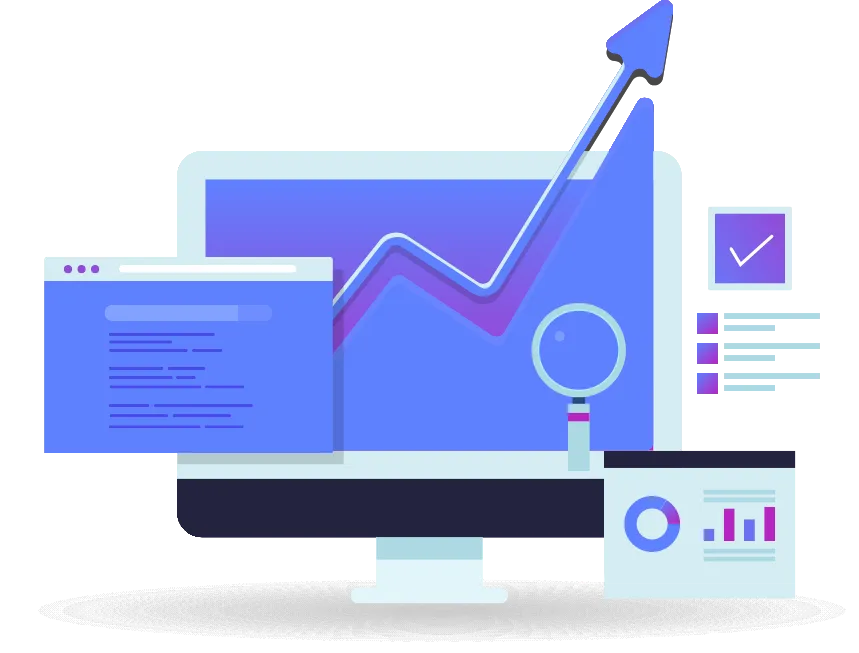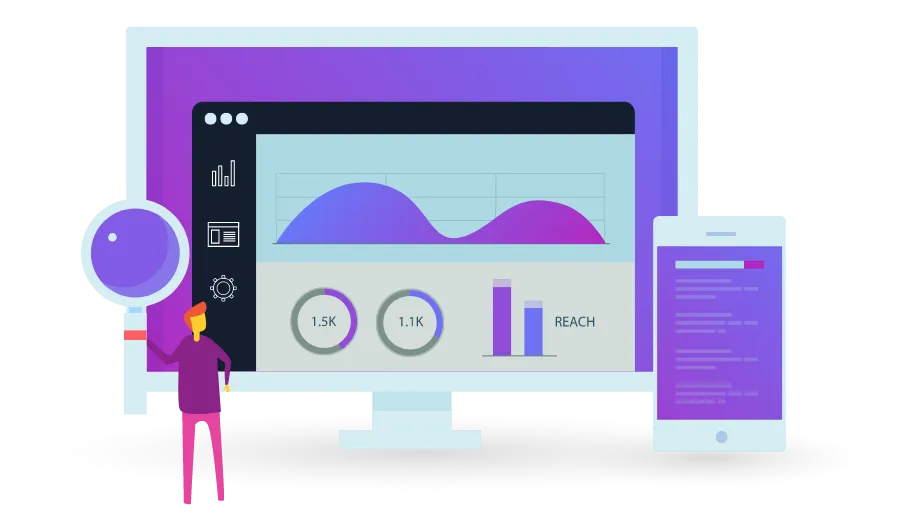If you invest in mutual funds or ETFs,
Rita℠ Can Help You Make More Money!
With Rita℠ you can quickly see how much more money you could have made by being in better performing mutual funds and ETFs.
Spoiler alert: You'll likely be shocked!

Until now investors have never been able to answer this key question:
“Of all available choices, which ones are best for me?”
Rita℠ enables you to quickly and easily answer that question in a way no other available tool can.
You’ll wonder why it’s not been available until now.
Spoiler alert: Do you think Wall Street really wants you to have that information?

See just how good your mutual funds are
compared to others
Now, for the first time, see how yours compare - not just to an
index but to every other fund or ETF you could have chosen.
Spoiler alert: Again, you'll likely be shocked!


With Rita℠ you can score and rank hundreds of mutual funds in moments
With Rita℠ you can quickly see if there are much better mutual funds & ETF choices than yours. Spoiler alert: There likely are!

See how good the funds brokers, advisors, and others are recommending actually are.
With Rita℠ not only can you quickly see that, you’ll also be better protected from being talked into buying inferior mutual funds and ETFs. Spoiler alert: What protection from that do you have now?


Do you have a lot of investment choices in your 401(k) plan and don’t know which ones to pick?
With Rita℠ not only can you quickly see which mutual funds are best for you, you’ll see how much more you could have made had you held those better choices. Rita℠ can also help you suggest better investment choices to be offered in your plan.

Prevent conflicts of interest from steering you into poor performing funds.
Ever worry that conflicts of interest may be negatively affecting the recommendations you’ve been getting? Rita℠’s patented decision-assistance technology effectively filters out all conflicts of interest, ensuring that you’re seeing the mutual funds and ETF’s that are objectively best for you.

While investing involves Risks and past performance is no guarantee of future results, regular use of Rita℠ enables you to answer this key performance monitoring question:
“How did my choice do versus all of the other choices I could have selected?”
If your mutual funds or ETFs start to drop in rank, you’ll now get to see which ones are moving up – all within the same asset class, the same goals and ranking criteria (yours), and same market conditions – something no investor has ever gotten to see. This can help you avoid one of the chief causes of chronic under-performance: holding poor performing choices far too long.
How Rita℠ Empowers You!

Easy to Use
Rita℠ is a web-based scoring and ranking application which provides you a search bar to easily enter in your choice of mutual fund or ETF ticker symbols, names, or asset classes, on any device, wherever you are connected to the internet.

Immediate Results
Initial results within Rita℠ display the top 10 highest scoring mutual funds and ETFs (you can see up to 50) along with your choice in the asset class and the class benchmark, based upon initial default settings.

24 Core Performance Factors
Initial results within Rita℠ display a score and a ranking derived from an initial blend of 6 weighted performance factors 1, 3, and 5-year average annual returns and 1, 3, and 5-year average annual volatility (risk). You can choose from 24 total performance factors and individually weight them in order of importance to you.

Choose Your Own Performance Factors
The Rita℠ performance factor menu allows you to choose which performance factors you wish to use in scoring and ranking the available choices and then lets you select the percentage weight of each of those factors based on our personal preferences and investment objectives.

Composite Scoring
Rita℠ generates a composite score for each mutual fund, ETF, and the Benchmark of the asset class based on the weighted performance factors you’ve chosen and is then used to rank all the available funds in the asset class, including yours, with the highest composite score ranking first.

The Final Results
Rita℠ displays the mutual fund or ETF you entered in the resulting table, displaying its numeric rank based on its composite score along with the top scoring funds and the benchmark for the asset class. And it will have all been done your way!
Insights
Learn More About Rita℠

Did Ben Franklin Foresee the Decision-Assistance Technology Powering Rita℠?
On September 19, 1772, Ben Franklin sent a letter responding to one from Joseph Priestley requesting assistance on making a difficult decision.
Ben’s letter back to Priestley described his decision method, and it is widely accepted as the first written account of a “decision-assistance” technique. You can enjoy reading it, below.
When you do, you’ll see him describe some challenges with which we are all familiar, today – challenges that the decision-assistance technology that powers Rita℠ was designed to help solve. One of the most important of these, as Ben points out, is that “there is often too much information to consider . . . and that makes decisions difficult.” Without the benefit of modern technology, Ben classified “factors” and “weighted” them, and then comparatively evaluated them to help in making his decision. Sound familiar?
However, Ben mentions that his decision-making process involves three to four days while, with Rita℠ the process can take you mere moments . . . a key benefit of our patented decision-assistance technology.
So, did Ben Franklin anticipate Rita℠? In a way, we believe he did. He certainly recognized the problem of having too much information, applied logic to find a way to productively use the information, and articulated a benefit of the use his process (a benefit shared by Rita℠ users) – that by doing so one is “less likely to take a rash step.”
Unfortunately for Ben, he was way ahead of his time and didn’t have the benefit of Rita℠ technology. You do or, at least, you can. We wonder what he would have thought to see the speed and effectiveness of scoring and ranking hundreds of mutual funds and ETFs (and doing multiple “what if” tests, by adjusting factors and weightings) in mere moments. Perhaps he would have been an “early adopter” and might have been able to write a shorter letter.
THE BEN FRANKLIN LETTER
The letter below is a response from Ben Franklin to Joseph Priestley’s letter requesting assistance on making a difficult decision. Ben’s letter back to Priestley described his decision method, and it is widely accepted as the first written account of a “decision-assistance” technique. Although, the technology and techniques have advanced in the last 250+ years, the rationales behind using a decision-assistance process still remain.
Letter To Joseph Priestley London, September 19, 1772
Dear Sir,
In the Affair of so much Importance to you, wherein you ask my Advice, I cannot for want of sufficient Premises, advise you what to determine, but if you please I will tell you how.
When these difficult Cases occur, they are difficult chiefly because while we have them under Consideration all the Reasons pro and con are not present to the Mind at the same time; but sometimes one Set present themselves, and at other times another, the first being out of Sight. Hence the various Purposes or Inclinations that alternately prevail, and the Uncertainty that perplexes us.
The point is made that there is often too much information to consider at a single point time and that makes decisions difficult. Consider, in comparison, the much greater amount of information available today, in this “Information Age.”
To get over this, my Way is, to divide half a Sheet of Paper by a Line into two Columns, writing over the one Pro, and over the other Con. Then during three or four Days Consideration I put down under the different Heads short Hints of the different Motives that at different Times occur to me for or against the Measure.
Ben is collecting all the factors he needs to consider within his decision process, and he is classifying his factors into Pros & Cons. The method he employs aligns closely with what we do today with our division of mutual fund and ETF performance factors between “Return” maximization-related and “Risk” minimization-related factors.
When I have thus got them all together in one View, I endeavour to estimate their respective Weights; and where I find two, one on each side, that seem equal, I strike them both out: If I find a Reason pro equal to some two Reasons con, I strike out the three. If I judge some two Reasons con equal to some three Reasons pro, I strike out the five; and thus proceeding I find at length where the Ballance lies; and if after a Day or two of farther Consideration nothing new that is of Importance occurs on either side, I come to a Determination accordingly. (emphasis added)
Once he has his factors classified, he weights them. He is not actually applying any math, but he’s using process of elimination to strike the factors from the decision, by identifying their relative weightings.
And tho' the Weight of Reasons cannot be taken with the Precision of Algebraic Quantities, yet when each is thus considered separately and comparatively, and the whole lies before me, I think I can judge better, and am less likely to take a rash Step; and in fact I have found great Advantage from this kind of Equation, in what may be called Moral or Prudential Algebra. (emphasis added)
One final and most important point here is that he’s applying a process to remove ‘rash’ emotions from his decision.
Wishing sincerely that you may determine for the best, I am ever, my dear Friend,
Yours most affectionately,
B. Franklin
Ben didn't have the benefit of our patented, decision-assistance technology - YOU DO!
Source: Mr. Franklin: A Selection from His Personal Letters. Contributors: Whitfield J. Bell Jr., editor, Franklin, author, Leonard W. Labaree, editor. Publisher: Yale University Press: New Haven, CT 1956.
Subscribe
Gain access to the power of Rita℠
No Credit Card Required To Start with Rita℠ Checkup!
Rita℠ Checkup
Free
No Credit
Card Required
Partial Rita℠ Features & Functions
Check How Your Current Choices Rank
Anonymous Ranked Funds
Email Support
Knowledge Base Access
Non-Commercial Use Only for a Single User
No Credit Card Required
Rita℠ Annual
Subscription
55¢/day
Billed Every
Year at $199
Full Rita℠ Features & Functions
Compare Your Choices Immediately
All Ranked Funds are
NamedEmail Support
Phone Support
Knowledge Base Access and Training Webinars
12 Month Recurring Subscription
Non-Commercial Use Only for a Single User
Rita℠ Monthly
Subscription
97¢/day
Billed Every
Month at $29
Full Rita℠ Features & Functions
Compare Your Choices Immediately
All Named Ranked Funds
Email Support
Phone Support
Knowledge Base Access and Training Webinars
Monthly Recurring Subscription
Non-Commercial Use Only for a Single User
spend a Day
with Rita℠
$7.97/day
Billed One
Time at $7.97
Full Rita℠ Features & Functions
Compare Your Choices Immediately
All Named Ranked Funds
Email Support
Phone Support
Knowledge Base Access and Training Webinars
One Day
Subscription
Non-Commercial Use Only for a Single User
Why Rita℠?
Worried about picking the right mutual funds and ETFs for your investment portfolio or your IRA or 401(k)? Rita℠ is the solution. Rita℠ is the only Retail Investment Tracking Application℠ that quickly and easily answers this key question: "Of all the available choices of mutual funds and ETFs, which ones are best for me? With Rita℠, you can feel confident that you're picking the best mutual fund and choices for your future. Stop guessing what's best for you - let Rita℠ do all the hard work!

“I've witnessed first-hand dozens of demonstrations of "RITA" to friends I’ve introduced. What's remarkable is when a person sees how much money he or she has not gotten over multiple years, they’re shocked. It shows them how much better they could be doing with this revolutionary investment tool.”
Robert S.


“This technology a game changer for individual investors. . . a major breakthrough. Investors will now be able to see how much money they’re leaving on the table, and the information obtained from Rita is actionable.”
Albert M.

Any investing-related information provided on sayrita.com is for educational purposes only. Decision Technologies Corporation does not offer investment advisory or brokerage services, nor does it recommend or advise investors to buy or sell particular mutual funds, ETFs, or other investments.
<a rel="me" href="https://mastodon.social/@sayrita">Mastodon</a>
© Copyright 2025. Rita℠ by Decision Technologies Corporation. All rights reserved


